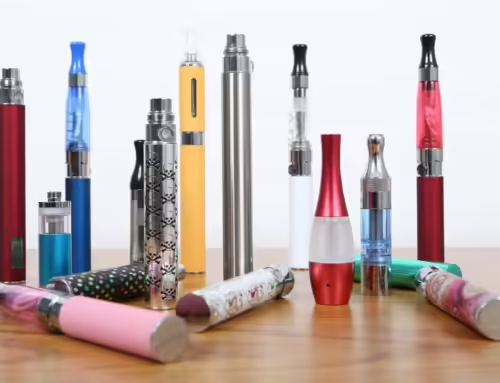If you’ve visited a convenience store lately, you’ve likely seen advertisements for nicotine pouches like Zyn, On!, Rogue or Velo. These ‘modern’ oral nicotine products have seen massive increases in sales over the last several years. What do we know about these products and who’s using them?
Oral nicotine pouches are similar to the spitless, smokeless tobacco product “snus,” except that the pre-filled pouches, designed to be placed between a user’s lip and gum, contain nicotine powder rather than tobacco leaf. This nicotine is still generally derived from tobacco, though there are some companies claiming that the nicotine they use is synthetic. These products are sometimes marketed as tobacco-free, which may imply lower risk even though they have not been proven. However, it’s important to note that they are not approved as nicotine replacement therapy or cessation products.
Data on youth use remains limited since the CDC’s National Tobacco Youth Survey began capturing data on nicotine pouches for the first time in 2021. As of 2022, use rates among youth were fairly low (1.1%), but concerns about increasing popularity among youth remain. Modern oral nicotine products are available in a wide variety of flavors, including menthol, flavors like mango or black cherry, as well as “concept flavors” like “smooth” and “chill”. Since 80% of middle or high school students who currently use any tobacco product report using a flavored product, these products have the potential to provide additional flavored options for youth. The pouches are small, smokeless, and spitless, allowing for discreet use. It’s easy to see how these products could pose an additional challenge for teachers and administrators already struggling to prevent the use and possession of tobacco products in schools. Lastly, nicotine pouches are often available at relatively low prices, which is often an important factor for price-sensitive groups like youth.
While non-combustible products like these may be less dangerous than cigarettes, they still have their own health risks, including addiction to nicotine, which can harm the developing brains of adolescents. In an attempt to take advantage of the harm reduction potential, Big Tobacco makes big claims about working toward a smoke-free world. Meanwhile, the industry spends more than 8 billion dollars a year marketing and promoting traditional combustible cigarettes while continuing to introduce new combustible products to the market. As always, we’ll be keeping a close eye on these products to see how tobacco at the point of sale continues to evolve.
Want to learn more about modern oral nicotine pouches? Listen to our Counter Tobacco podcast! And check out this GQ article that cites Counter Tools: Why are Zyn Nicotine Patches Suddenly Everywhere?





